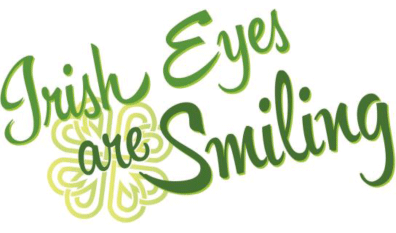
St. Patrick’s Day is upon us!
Millions across the US will become Irish for the day and feast on Corned Beef and Cabbage, drinking as much beer as possible. The celebration, still sacred to Irish Catholics, has become a popular secular holiday characterized by story-telling and public intoxication.
The 33 million US residents claiming Irish ancestry are nearly seven times the current population of Ireland; but anyone can become Irish on St. Paddy’s Day when you smile with your “Irish Eyes!”
Did you know that when Irish eyes smile the world really does seem brighter?

Duchenne Smile
Smiling with your eyes (also known as a a Duchenne-Smile) distinguishes when we use both the mouth muscle (zygomaticus muscle) and the eye muscle.

non-Duchenne Smile
A non-Duchenne smile contracts only the mouth muscle (zygomaticus muscle) and looks like a “fake smile” when the eyes are not engaged.
Research shows that smiling with your eyes can affect how we perceive negative stimuli, in the form of stress or pain.
A 2012 study out of the University of Kansas explored this idea. Researchers recruited 170 college students and divided them into three control groups: a neutral expression group, a standard smile or non-Duchenne group, and a Duchenne-Smile Group.
The three smile groups were coached on how to hold the correct smile. The Duchenne-Smile group were shown how to hold chopsticks in their teeth and smile widely with their eyes, while the standard smile (or non-Duchenne-Smile) group were trained to activate only the zygomaticus muscles. The neutral group was taught to hold the chopsticks in their teeth with a relaxed face.
Participants were then given two stressful tasks to perform that elevated their heart rate, and this was monitored during the recovery immediately after the task was completed. The first task was to trace a star with their non-dominant hand while viewing only the mirror image. To raise the stakes, negative auditory feedback was given if they drew outside the lines. The second task included placing their hand in ice water for 1 minute.
Chopsticks were held in the mouth only during the stressful period of completing the tasks, and not during the recovery period. Participants were verbally coached during the task to maintain the proper smile for their respective group.
Their results showed that the recovery was the quickest and heart rates were the lowest for the Duchenne-smile group, followed by the standard-smile group. The neutral group (non-smiling) had the slowest recovery and the highest heart rate of all the groups.
So what does this all mean? …SMILE!
Putting a smile on your face WILL decrease your stress! But not just any smile, it must be a genuine, eye-squinting, face-scrunching, Duchenne smile.
So when you are performing stressful tasks, it is best to just grin and bear it.
Whether you are working your way through the crowd at the St. Paddy’s Day Parade, trying to remember where you parked your car, or reaching for the last Guinness at the bottom of the ice cooler…
….remember to keep your Irish eyes smiling!
The Smile Prescription can be purchased at:
Amazon
Barnes and Noble (Online and in Stores)
Call ImageLift today (877.346.2435) or visit our Facebook page for more info.
